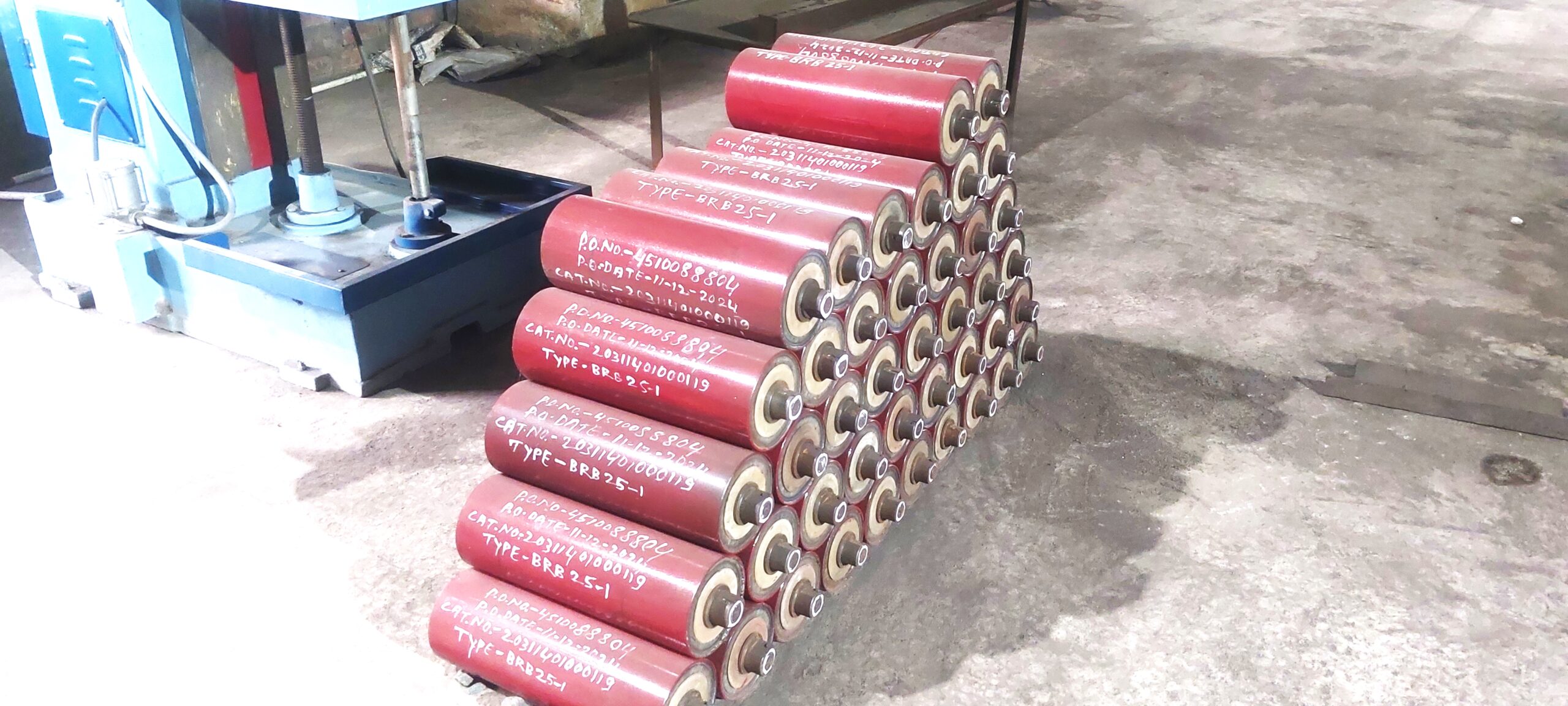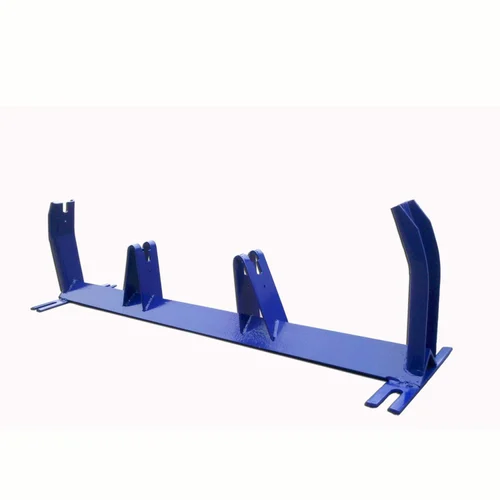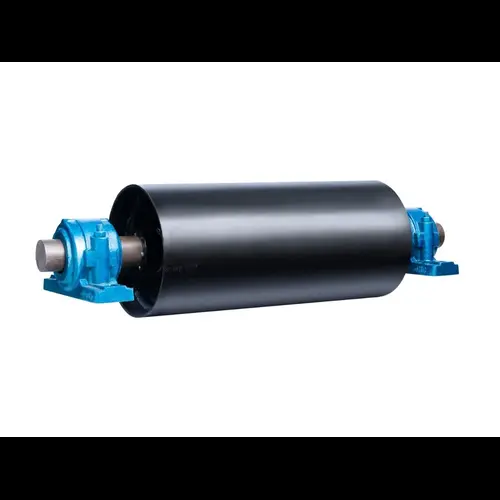Idler Rollers Manufacturing by state of art manufacturing facility
Manufacturing idlers and rollers Idler rollers, or guide rollers, are essential components in many industrial applications, particularly in conveyor systems. They’re not powered but are crucial for supporting the conveyor belt and the materials it carries. Manufacturing these rollers requires precision to ensure durability and smooth operation. Here’s a guide to the process. Materials and Design The first step is selecting the right materials. The core of the idler roller is typically a steel tube, chosen for its strength and rigidity. The type of steel can vary, but mild steel is a common choice due to its balance of cost and performance. The bearings are another critical component, and they’re usually deep groove ball bearings because they can handle both radial and axial loads. The shaft, which holds the bearings in place, is also made of steel. The design phase is where engineers determine the roller’s dimensions, including its length, diameter, and the specific bearing and shaft sizes. These dimensions depend on the conveyor system’s load capacity and belt width. Proper design ensures the roller can handle the stresses it will be subjected to without deforming. The Symphony of Automation: Manufacturing with Precision Our facility boasts a range of cutting-edge machinery, ensuring each stage of the manufacturing process is executed with unparalleled accuracy and efficiency. 1. Precision Tube Processing: The journey begins with the precise cutting of the steel tubes to the specified lengths using automated CNC (Computer Numerical Control) cutting machines. These machines ensure clean, square cuts, which are crucial for the subsequent welding process. Robotic arms then seamlessly transfer the cut tubes to the next stage, minimizing human intervention and maximizing throughput. 2. Automated Bearing Housing Production: The bearing housings, critical for securing the bearings within the roller, are manufactured using high-speed CNC machining centers. These machines can produce complex geometries with micron-level accuracy, guaranteeing a perfect fit for the selected bearings. Automated inspection systems verify the dimensions of each housing, rejecting any parts that fall outside the strict tolerances. 3. Robotic Welding Excellence: The welding of the bearing housings to the steel tube is performed by state-of-the-art robotic welding cells. These robots are programmed to execute precise and consistent welds, ensuring maximum strength and structural integrity. The use of robotic welding minimizes the risk of human error and guarantees a uniform weld bead, which is essential for the roller’s longevity, especially under heavy loads. Non-destructive testing methods, such as ultrasonic testing, are employed to verify the integrity of the welds. 4. Precision Shaft Machining: The shafts, which provide the central axis for the roller’s rotation, are machined from high-quality steel bars on advanced CNC lathes. These machines can produce shafts with extremely tight tolerances on diameter and concentricity, ensuring smooth bearing operation and minimal vibration. Automated gauging systems provide real-time feedback, ensuring the accuracy of the machining process. 5. Automated Assembly and Bearing Integration: The assembly of the idler roller is a highly automated process in our Bhagalpur facility. Robotic systems carefully press the selected high-quality bearings onto the machined shafts with precise force and alignment. The shaft and bearing assembly is then automatically inserted into the welded roller body. Advanced vision systems guide the robots, ensuring accurate and damage-free assembly. Locking mechanisms, such as circlips or specialized seals, are automatically installed to secure the bearings and protect them from contaminants. 6. Surface Treatment and Coating: To enhance the durability and corrosion resistance of our idler rollers, we employ automated surface treatment and coating lines. Depending on the application requirements, rollers may undergo processes like shot blasting to prepare the surface, followed by automated powder coating or electroplating. These advanced coating technologies provide a uniform and durable protective layer, extending the lifespan of the rollers even in harsh operating environments. 7. Comprehensive Quality Assurance: Quality is paramount in our state-of-the-art facility. Throughout the entire manufacturing process, rigorous quality control measures are implemented. This includes in-process inspections using advanced sensors and vision systems, as well as final product testing. Each idler roller undergoes tests for dimensional accuracy, weld strength, bearing fit, and rotational balance. Our dedicated quality control team utilizes sophisticated testing equipment to ensure that every roller leaving our facility meets the highest industry standards and our stringent internal specifications. The Advantage of State-of-the-Art Manufacturing in our factory Manufacturing idler rollers in a state-of-the-art facility like ours in factory offers numerous advantages: By investing in cutting-edge technology and fostering a culture of quality, our idler roller manufacturing facility in Bokaro Steel City, Jharkhand, India is committed to delivering high-performance and reliable components that contribute to the efficiency and productivity of industries worldwide. We are proud to be at the forefront of idler roller manufacturing, setting new standards for quality and innovation.



